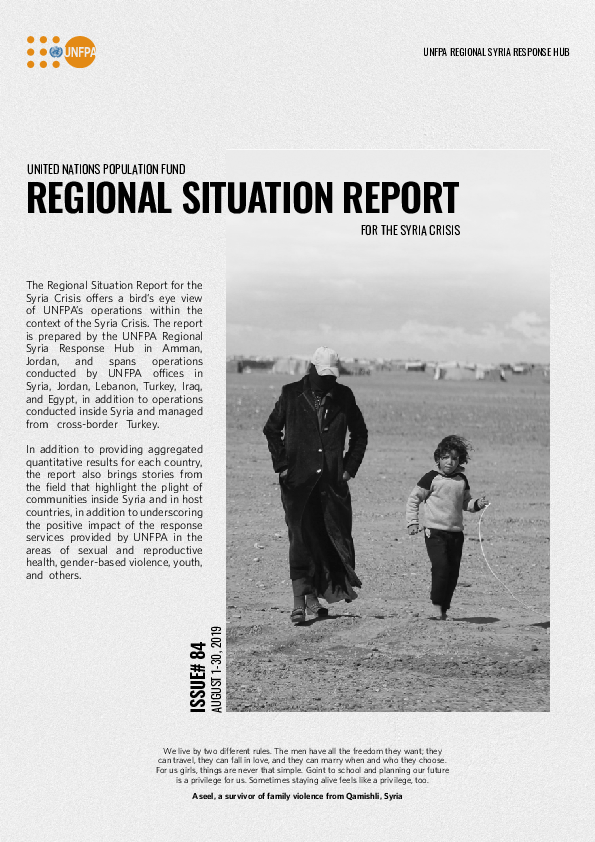
Regional Situation Report for Syria Crisis #84 August 2019
Resource date: 31 August 2019
Author: UNFPA Regional Syria Response Hub
The security situation in Syria remains volatile and unstable. Idlib, Aleppo, Daraa, Al-Hassakah, Deir-ez-zor, North Lattakia and North Hama governorates remain primary hotspots.
The most recent data by the World Health Organization (WHO) shows that between December 2018 and July 2019, the number of people in need has increased by more than 534,000 to reach 13.72 million due primarily to the impact of hostilities.
The current situation has put the lives of women, men, girls and boys at risk every day and has significantly impacted their psychosocial well-being with reportedly high levels of trauma. According to a rapid needs assessment conducted by REACH, safety and security concerns severely restricted freedom of movement, while damage to civilian infrastructure prevented access to essential services. This exacerbates the vulnerability of communities, making the provision of humanitarian assistance in these areas even more critical.